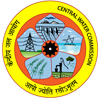Basin Details : Brahmaputra & Barak Basin Organisation
B&BBO About Basins
Brahmaputra Basin
Physiography
Brahmaputra sub-basin extends over an area of 580,000 sq.km lying in Tibet (China), Bhutan, India and Bangladesh. The drainage area lying in India is 194413 sq.km which is nearly 5.9% of the total geographical area of the country. It is bounded on the north by the Himalayas, on the east by the Patkai range of hills running along the Assam-Myanmar/Burma border, on the south by the Assam range of hills and on the west by the Himalayas and the ridge separating it from Ganga sub-basin. The sub-basin lies in the States of Arunachal Pradesh, Assam, Nagaland, Meghalaya, West Bengal and Sikkim. The State-wise distribution of drainage area is given below :
|
State |
Drainage area (sq.km) |
|
Arunachal Pradesh |
81,424 |
|
Assam |
70,634 |
|
West Bengal |
12,585 |
|
Meghalaya |
11,667 |
|
Nagaland |
10,803 |
|
Sikkim |
7,300 |
|
Total |
194,413 |
The upper portion of the sub-basin lying in Arunachal Pradesh and Nagaland is mostly mountain ranges and narrow valleys. Most portion of the sub-basin lying in Assam, Meghalaya and West Bengal consists of hills, forests and tea gardens. The Cooch Bihar and West Dinajpur districts of West Bengal has fertile plains.
The most predominant soil type found in the sub-basin is the red loamy soil and alluvial soil. Other important soil types are sandy, loamy, clayey soils, their combinations and laterite soils. The culturable area of the sub-basin is about 12.15 M. ha which is 6.2% of the culturable area of the country.
River System
Brahmaputra river originates from Kailash ranges of Himalayas at an elevation of about 5150 m and flows for about 2900 km through Tibet (China), India and Bangladesh and joins the Ganga. The principal tributaries of the river in India are the Dibang, the Lohit, the Subansiri, the Manas, the Tista, the Dhansiri and the Champamati. Get basin map of the sub-basin showing the river system and other details.
Hydropower Potential
The Brahmaputra sub-basin has abundant hydro -power potential. As per the latest assessment the hydropower potential of the sub-basin is 31012 MW at 60% load factor. This is almost 37% of the country's total hydropower potential. A large chunk of the hydropower potential of the sub-basin remains to be tapped.
Hydrologic Network
The Central Water Commission maintains 137 gauge-discharge sites in the sub-basin. In addition, gauge data at 80 sites, gauge-discharge data at 15 sites and gauge, discharge and sediment data at 25 sites, maintained by the State Governments and the Brahmaputra Board, are also available. The Central Water Commission operates 28 flood forecasting stations in the sub-basin.
Existing Organisations
Brahmaputra Board was established by the Govt, of India in 1980 with the object of preparing a master plan for controlling the flood and bank erosion and improving the drainage of the Brahmaputra valley, simultaneously tapping the immense water potential for hydropower generation and possible irrigation. The Board has jurisdiction over the adjacent Barak valley also.
BARAK SUB-BASIN
Physiography
The Barak sub-basin drains areas in India, Bangladesh and Burma. The drainage area of the sut lying in India is 41723 sq.km which is nearly 1.38% of the total geographical area of the country. It is be on the north by the Barail range separating it from the Brahmaputra sub-basin, on the east by the Na Lushai hills and on the south and west by Bangladesh. The sub-basin lies in the States of Meghalaya. Manipur, Mizoram, Assam, Tripura and Nagaland. The State-wise distribution of drainage area is given below
|
State |
Drainage area (sq.km) |
|
Meghalaya |
10650 |
|
Manipur |
9567 |
|
Mizoram |
8866 |
|
Assam |
7224 |
|
Tripura |
4688 |
|
Nagaland |
728 |
|
Total |
41723 |
There are two major physiographic regions in the sub-basin, namely, the hilly region and the plain are thickly populated and extensively cultivated. The predominant soil types found in the sub-basin are laterite, red and yellow soils. The culturable area in the sub-basin 0.893 M. ha which is only about 0.5% of the culturable area of the country.
River System
Barak rises in the Manipur hills and enters the plains near Lakhipur. The river enters Bangladesh as Surma and Kushiyara. Later, the river is called the Meghna and receives the combined flow of the Ganga and Brahmaputra. The principal tributaries of Barak are the Jiri, the Dhaleswari, the Singla,the Longai, the Sonai and the Katakhal.
Hydropower Development
The sub-basin has good hydropower potential. As per the latest assessment, the hydropower potential of the basin is 2042 MW at 60% load factor. Bulk potential remains to be exploited.
Hydrological Network
The Central Water Commission maintains 97 gauge-discharge sites in the sub-basin. The CWC also operates 6 flood forecasting stations in the sub basin.
 Government of India
Government of India 